Coffee bean roasting comparison table of roasting degree of eight kinds of coffee and the difference between moderate roasting and deep roasting

Professional coffee knowledge exchange more coffee bean information please follow the coffee workshop (Wechat official account cafe_style)
Regular coffee drinkers all know that coffee beans have different degrees of roasting, and the presentation of flavor and taste are different. Qianjie, as a self-baked coffee shop, has dozens of stoves of coffee beans that need to be roasted every day. The flavors of light-roasted Yejasuefei and medium-roasted Brazilian coffee are well known, and the curve of new beans needs to be adjusted. Even coffee roasting is a deep skill. Then let's talk about the understanding of baking in front of the street.
The so-called coffee roasting (coffee roasting) refers to the process that through heating the raw beans, a series of physical and chemical reactions take place inside and outside of the coffee beans, and in this process, the sour, bitter, sweet and other flavors of the coffee are formed, forming mellowness and hue, and transforming the raw beans into dark brown beans.
The important thing about coffee roasting is the quality, that is, the repeatability of baking.

For buyers, the most feared thing was that the quality of the coffee would fluctuate between good and bad. It was like a bean. The flavor of the last drink was completely different from this time. The brewing method was obviously the same, but the flavor was different. At this time, it was a test of the roaster's ability. The phrase 'quality is the same' sounded simple, but it was actually difficult to operate.
Front Street Coffee believes that it cannot ignore the fact that there are too many factors that can affect the roasting effect, not to mention the uncontrollable factors such as raw beans and weather. Other factors that need to be adjusted manually include: adjustment of fire power, cleaning of damper, use of gas, etc. Baking a bean is stable requires the baker to record in detail the temperature of each pot of beans, the weight of the beans, the temperature of the beans, the temperature of the boiler per minute, the dehydration point, the explosion point, the explosion time, the extraction time, the dehydration rate, the temperature rise rate, etc.(the more detailed the better). Due to various small changes in temperature and heat during the baking process, the taste of the beans can be changed. Different beans have different characteristics. Furthermore, baking is a task that can be performed quickly in a short time, so it is required to accurately estimate the baking process and correct the curve by cup measurement during baking.
Before learning coffee roasting, let's take a look at the most common types of coffee roasters:
1. Direct Fire Roaster
2. Half Hot Air Roaster
3. Hot Air Roaster Before starting baking, let's get to know the basic structure of the bean dryer. The front street coffee uses the Yangjia Pegasus 600 g bean dryer (half hot Air Roaster).

Detailed description of coffee roaster types:
1. Hot air type
The hot air type bean dryer uses the blower to absorb the air, and then let the air pass through a heating coil to raise its temperature. Hot air is used as a heating source to bake coffee beans. Hot air can not only provide the temperature needed for baking, but also use the power of airflow to stir coffee beans, killing two birds with one stone.
Advantages: high thermal efficiency, fast heating, relatively uniform heating of raw beans, easy to control.
Disadvantages: because of the high heating efficiency, it is easy to lead to excessive heating, resulting in beans "entrainment", and too high temperature is easy to make the caramelization reaction is not sufficient.
Taste characteristics: the acidity is obvious, the taste is relatively clean and simple, but the taste is not rich enough and lacks depth, and deep baking is easy to produce irritating taste.
two。 Direct fire type
As the name implies, the direct fire is to heat the coffee beans directly with a flame. Up to now, the "fire" of direct fire not only includes general flame (including gas furnace fire and charcoal fire), but also includes infrared and electric heating pipe.
Advantages: the baking time is long, so the caramelization reaction is sufficient and the flavor is rich.
Disadvantages: it is easy to cause uneven baking, and if the heat is not well controlled, it is also easy to scorch coffee beans and form a scorched bitter taste.
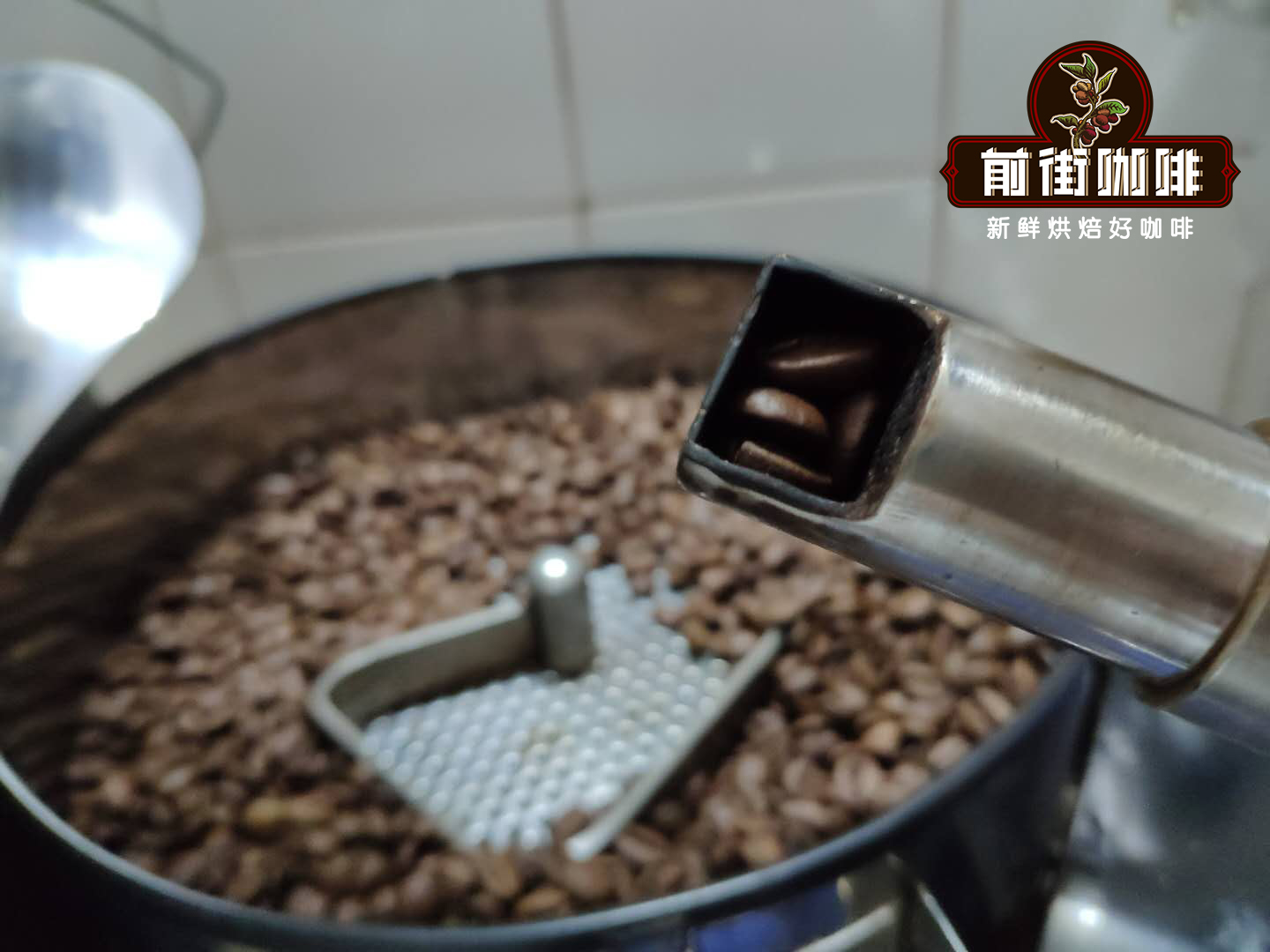
3. semi-direct fire semi-hot air type
The baking method combining the advantages of direct fire and hot air is the mainstream of commercial baking machines at present. Semi-direct roasting is similar to direct roasting, but because there are no holes in the outer wall of the roasting container, the flame does not directly contact the coffee beans; In addition to this, an exhaust device is added to introduce the hot air outside the roasting container into the roasting chamber to improve the roasting efficiency. Another function of this exhaust device is to suck out the silver skin (film attached to the outer layer of coffee seeds), so as to prevent the silver skin from burning in the roasting chamber due to high temperature, thus affecting the taste of coffee beans.
Semi-direct fire semi-hot air machine has the advantages and disadvantages of direct fire and hot air, but according to the adjustment of hot air and boiler speed to change its heating mode. The larger the hot air is opened, the faster the rotation speed is, the closer it is to the hot air type; otherwise, the closer it is to the direct fire type.
This kind of household baking machine uses alcohol lamp or gas lamp as heat source, and larger ones use flame on gas stove as heat source directly. The advantages of this baking machine are intuitive, easy to control the baking degree, easy to clean silver skin, but the baking temperature is not easy to control.
How to operate the front street hand-operated semi-straight fire roller roaster
1)In the roasting drum filled with coffee beans, the amount of beans depending on the size of the drum, and then closed the drum;
2) Ignite the fire source, shake the handle at a constant speed, and rotate the baking roller to make the beans in the roller evenly flip;
3)After 3~4 minutes of baking, the beans in the pot began to turn yellow, silver skin off, emitting aroma;
4)Bake to 6~7 minutes, the beans in the pot have become brown, and began to emit white smoke, to 8 minutes or so began to explode;
5)After about 10 minutes, the explosion ended. If you like light flavor, you can produce beans. On the contrary, continue baking, waiting for the second explosion;
6)At 12 minutes, the second explosion is complete, and the beans are quickly released and cooled by an electric fan, and the baking is over.

How to determine the roasting degree of coffee in front street
Raw beans-each coffee cherry contains two raw beans, when the fragrance is still deep, waiting to be discovered. In raw beans, there is a lot of chloric acid, which disappears with the baking process, releasing familiar and pleasant fruit acids such as acetic acid, citric acid, and malic acid found in wine. Baking is just right to present these beautiful sour tastes in moderation, while if you bake them too much, they will be completely masked.
When baked for 5-7 minutes, the beans begin to release water, changing from light green to orange, emitting the unique aroma of creamy roasted vegetables.
Light baking-when the beans make the first light sound, the volume expands at the same time, and the color changes to a delicious cinnamon color, so it is also called cinnamon roast or half-city roast. Acidity dominates the flavor of shallow roasted beans, texture and taste have not been brought into full play, so they are generally used as canned coffee, can not meet the real coffee experts.

Lightly roasted coffee beans
Medium roasting-when roasted for 10-11 minutes, the coffee beans are elegantly brown. New Yorkers like to start each day by roasting coffee beans with fragrant milk and sugar at breakfast, so this method of baking is also called breakfast roast or city roast. Medium roasting can not only preserve the original flavor of coffee beans, but also moderately release aroma, so Blue Mountains, Colombia, Brazil. Wait for a single cup of coffee, choose this kind of baking method.

Medium-baked coffee beans
At 12-16 minutes, the oil begins to surface, and the beans are burned to a bright dark brown, called full-city roast. Some people think that the sour, sweet and bitter taste of coffee reaches the perfect balance, and the character of coffee beans is clearly carved out.
Deep roasting-the darker the color of the coffee beans, the sweeter the flavor, when the oil has turned into caramel, the bitter taste is endless, which is the most suitable for brewing strong Espresso coffee, so it is also called Italian roasting.
Moderate roasting gives life to the coffee beans and turns into an intriguing sour, sweet and bitter taste. However, people who are sensitive to caffeine might as well choose deep-roasted beans as much as possible, because caffeine will slowly escape during roasting, so the deeper the roasted beans, the lower the caffeine content. It is said that the caffeine content in each cup of Espresso is only half that of other medium-roasted coffee.
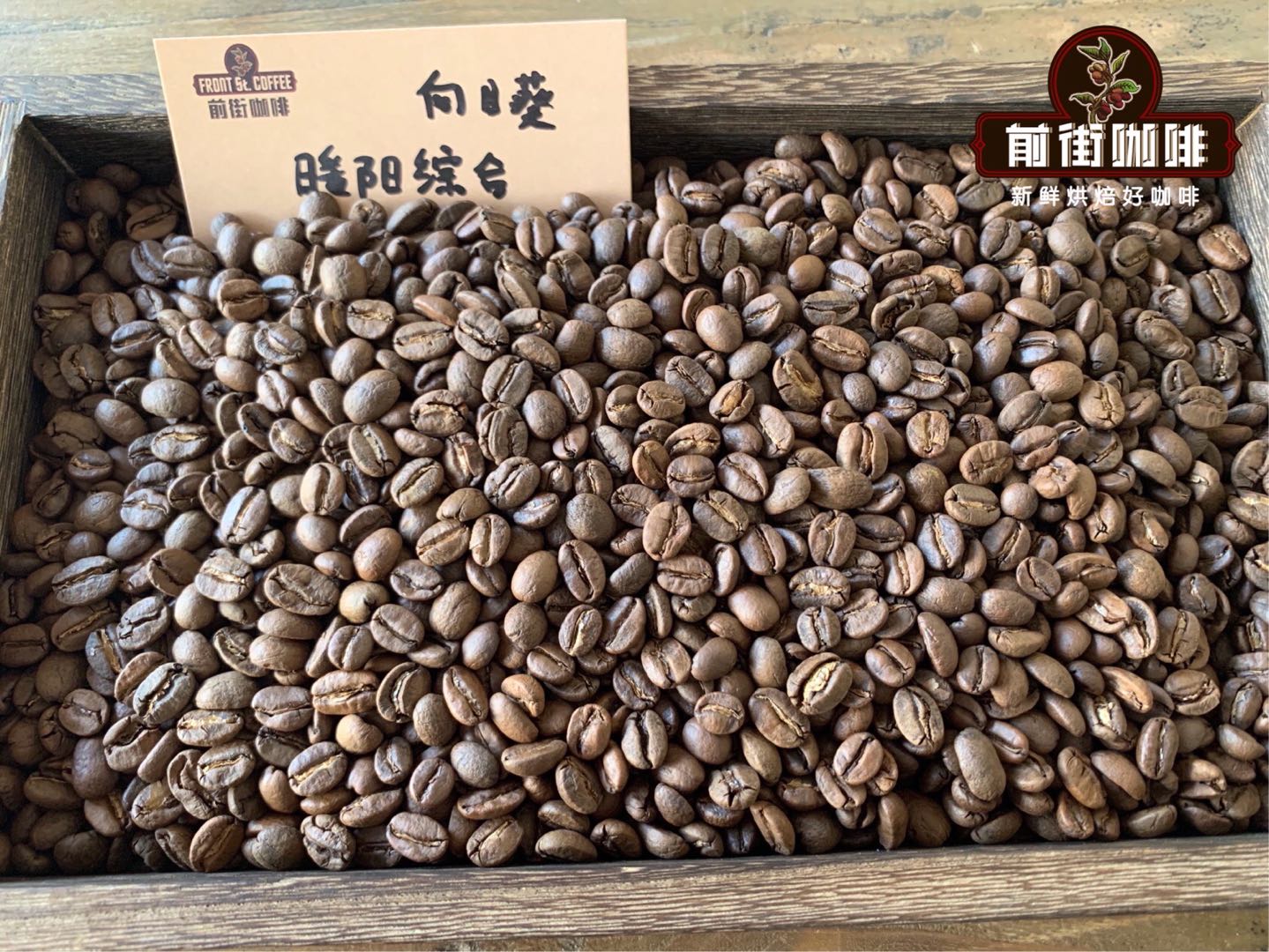
Deep-baked coffee beans
We all know that coffee beans produce coffee flavor and aroma during roasting, so how do you get this flavor and aroma? What does it have to do with caramelization and Mena reaction?
What is the caramelization reaction?
The sugar in the coffee bean is caramelized at about 170-200 ℃, which is exactly the melting point of sucrose (185 ℃) and the temperature of the explosion stage when the coffee bean is roasted.
The product of caramelization is divided into two parts:
The dehydration product of sugar is caramel or sauce.
The pyrolysis products are mainly volatile aldehydes and ketones.
Generally speaking, fire-roasted aroma, caramel and color are produced in the caramelization reaction, as well as other aromatic substances such as maltol, Cyclotene, furan and so on. These compounds can also be found in red wine, fruit juices, cream and other foods.
However, if caramel is too much in the baking process is not a good thing, but will cause carbonization, making the coffee dry and choking. If the caramel is not enough, it will make the aroma monotonous and lack of layers.
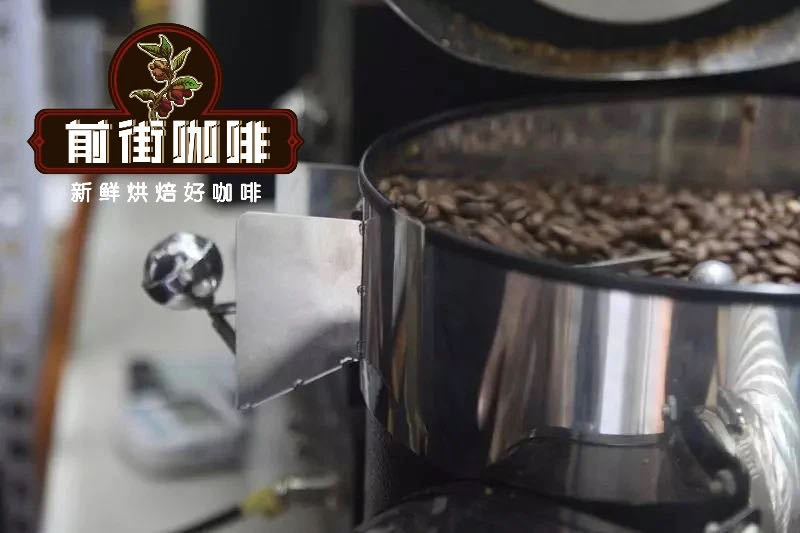
Caramelization Reaction Temperature and Coffee Roasting
During roasting, there are three elements that determine the final flavor of coffee that must be controlled properly: sourness, sweetness, and bitterness. In general, the longer the total roast time, the less sour the final result will be, conversely, bitter coffee will be more intense with the longer the roast time, the more bitter the darker the roast coffee will be.
It is this seemingly uncomplicated process that sublimates sugar, breaking down the single sweetness and incorporating a more sensual color and a more appetizing aroma. If you cook at home with sugar, the whole process is accompanied by an intoxicating aroma.
What is the Maillard reaction?
The Maillard reaction is one of the most complex chemical reactions that occur during coffee roasting. After the Maillard reaction, coffee beans contain more than twice as many flavor substances as raw beans before roasting! Therefore, Maillard reaction is one of the most important reactions to produce coffee flavor.
Maillard reaction refers to a series of complex reactions between amino compounds (amino acids and proteins) and hydroxyl compounds (mainly glucose, fructose, lactose, maltose and other reducing sugars) to produce brown compounds and then black macromolecular compounds-melanoid-like in the later stage of the reaction. So Maillard reaction is also called nonenzymatic browning reaction.
Maillard reaction can be divided into three stages
1. Initial stage:
Amadori Molecular Rearrangement by Carbonylamine Condensation
II. Medium-term:
Amadori molecular rearrangement product fructosamine dehydration to HMF (hydroxymethylfurural)
Deamination of fructosamine to reduce ketone
Interaction of Amino Acids with Dicarbonyl Compounds
III. Final Stage:
aldol condensation
Melanin-forming polymerization
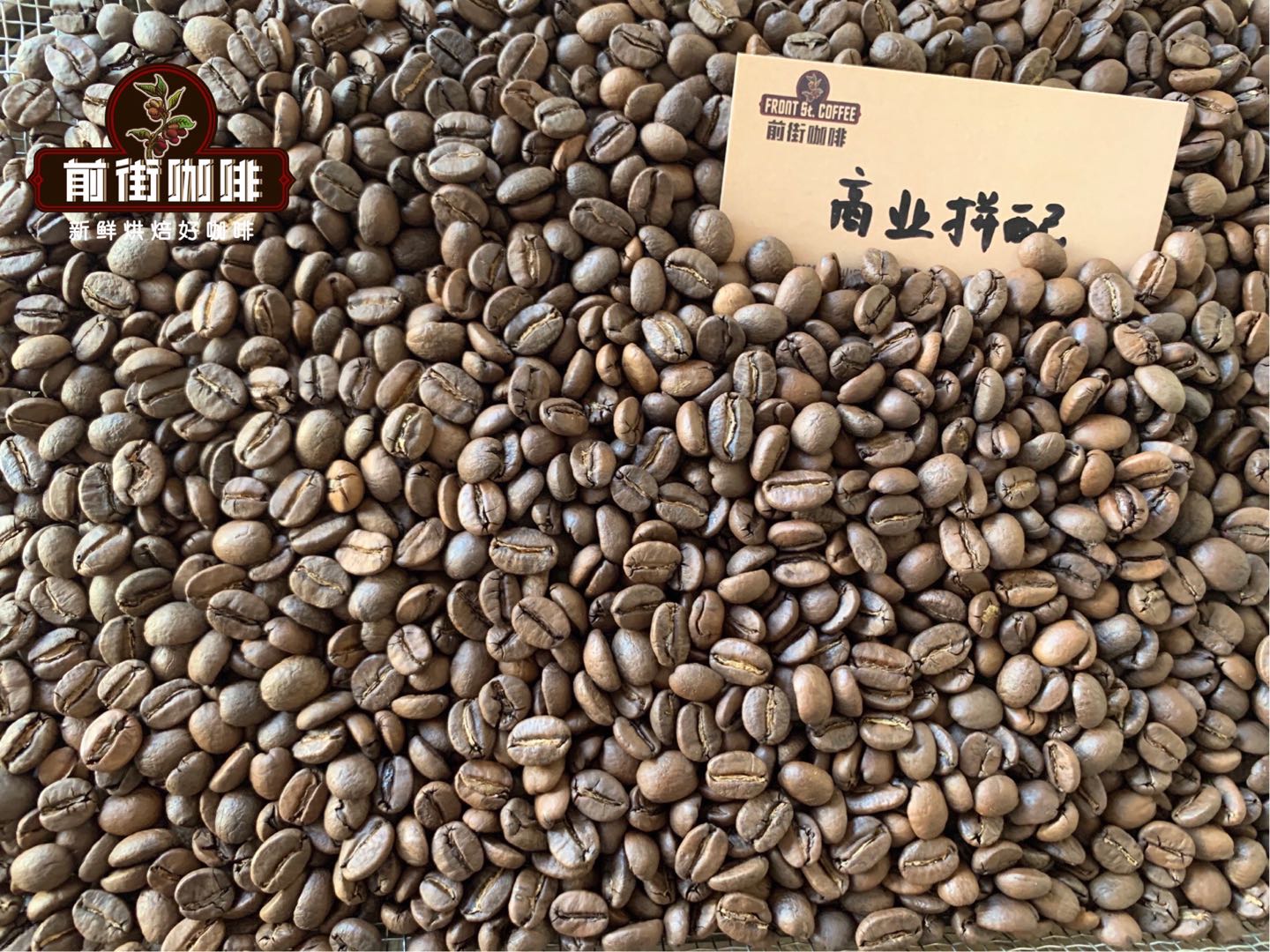
During coffee roasting, the Maillard reaction mainly begins when the bean color changes to yellow and then brown after dehydration, and the reaction does not stop until the beans are completely cooled. But at the beginning of the explosion, another reaction that plays an important role in the flavor of coffee, the caramelization reaction, will begin, and it will share the same raw material-sugar as Maillard's reaction. The rate of Maillard's reaction began to slow down. Therefore, the main Maillard reaction stage refers to the period from the beginning of yellowing to the explosion of coffee beans in the roasting process. Melanin, a macromolecular compound, is continuously produced during the reaction, and more than 600 volatile organic compounds are eventually found in roasted coffee beans. So Maillard reaction brings flavor, taste, color and complexity to coffee.
Then, in the process of coffee roasting, we can adjust the degree of Maillard reaction indirectly by adjusting the rhythm of roasting, and then adjust the flavor of coffee. Since the Maillard reaction has little effect on the reaction rate by increasing the temperature after 80 degrees Celsius, it is generally adjusted by prolonging or shortening the reaction time. Prolonging the Maillard reaction time will produce more macromolecular melanin, which will bring thicker taste, more complex and deeper flavor to the coffee.
What do you mean by primary explosion and secondary explosion?
As the baking goes on, the temperature of the beans begins to rise.
"an explosion: as a result, the ingredients in coffee beans began to undergo a variety of chemical changes, and little by little formed the color, bitterness, sour taste and aroma of coffee beans. At this point, water vapor and carbon dioxide are gradually produced in the beans, which increase the pressure inside the coffee beans, so the coffee beans expand. As the card can not withstand the increasing pressure, with the crackling sound, the cells of coffee beans are destroyed, which is the so-called "explosion". Meet

"Second explosion": After the first explosion, some of the components produced begin to decompose while heating. Gas is produced during this process, causing the beans to continue to expand. As the coffee bean expands, the cell is destroyed again, followed by a crackling sound. This is the so-called "second explosion" and "third explosion". This change stops when the beans are removed from the roaster and forced to cool.
Once coffee beans expand, they don't retract. When roasting the same variety of green coffee beans, the size of the coffee beans determines the way the dark roast and light roast are done, and the light roast coffee beans are smaller.
Common problems encountered during the coffee roasting phase include the following:
1. The preheating temperature of the oven is insufficient, and the coffee beans are immediately put into the oven, so that the roasting time is prolonged. As a result, roasting losses are large and coffee beans are light in color, which is due to insufficient heat, the skin cannot be fully charred, resulting in a lack of color, and the internal tissue is rough.
2, the oven temperature is too high, the surface of the roasting coffee forms a crust too early, so that the internal tissue expansion is suppressed, and because of its rapid surface coloring, the operator mistakenly believes that the product has been roasted and the roasting is completed in advance. The bean's interior is sticky and dense, and it doesn't swell as much as it should, and it doesn't have the normal flavor.
3. The neutral is too long after preheating. Too much heat is accumulated in the inner furnace for too long. As soon as the coffee beans enter the furnace, all the heat sources will be concentrated on the surface of the beans at the initial stage of the roasting process, forming too strong a fire, and then the heat disappears and the temperature in the furnace quickly cools down. The unstable temperature in the furnace causes the coffee beans to be difficult to ripen.
4. Baking time is too much or too little. The baking temperature and the length of time should be adjusted according to the number of beans. A small number of baking bins have more space, and the heat of metal conduction heat radiation is large, so the temperature is lower; and when the number is large, the temperature can be higher. The length of baking time also needs to be flexibly adjusted. Most beans into the furnace heating nothing more than by the appearance and around the absorption of heat transmitted to the center of the beans, so you can observe the appearance of beans to change its baking situation.
5. Different types and performances of baking machines will also cause differences in baking time and temperature. From the former direct fire gas type up and down fire mode to the electric heat type commonly used now, the convection design of energy is constantly improved. At the same time, the fan can improve the stability of heat convection, so that the color of baked beans is more uniform, and it can also save electricity and baking time.
The main points needed before roasting coffee beans:
Remove bad coffee beans mixed in with green beans, such as defective beans, even a defective bean may affect the taste and flavor of the whole batch of coffee.
The ideal moisture content of raw beans is 11~13%. To maintain this moisture content, a good storage environment is required. The humidity and temperature of the warehouse should be maintained at an average of 50% and 20°C.
When we are ready to roast, we measure the weight of the green coffee beans to be roasted and pour them into the funnel on the fuselage. Although they are ready to bake, sometimes they may have to wait a little longer in the ditch. What is the reason for this? This is because before baking, the roaster needs to undergo a preheating procedure. We set the temperature to preheat, preheat and then go to the appropriate furnace temperature setting, raw beans can be put into the furnace. The principle is similar to frying a steak. We rarely put a piece of steak ready to be fried on a cold pan. Bake a cake in an oven. The preheated oven will bake the cake more evenly and expand it better. Coffee roasting and cooking follow similar principles: they both require a procedure for preheating tools.

Schematic diagram of raw beans
Key one: warm pot
According to the reference, the basic input temperature of the roaster is based on 200 degrees, so the temperature of the boiler must be stabilized above 200 degrees, and the maximum throttle is set for the throttle. The heating time is about 45 minutes, and the temperature reaches 200-210 degrees after 45 minutes.
If the temperature of the boiler is 210 degrees and we need 200 degrees, then we can close the throttle and make the temperature fall to 200 degrees, and then we can proceed to the next step. Rapid heating is not recommended because in the result of the bean dryer, too much firepower (gas) will only increase the temperature on the surface of the boiler, not the temperature of the whole boiler.

Key 2: determine the temperature of raw beans according to their properties.
Today, refer to Papua New Guinea Paradise Bird, tin card species, for low-density raw beans, so it is not very suitable for deep baking, with refreshing sour taste and fruit aroma, we will choose moderate shallow baking, will focus on the firepower adjustment after the first burst, first determine the condition basis of raw beans, and then determine the baking method, first of all, it is a washing processing method, low density, moisture content of 10% of the 17-year-old beans. The input temperature is set according to the existing raw bean status, so the input temperature is set at 200 degrees.

Key three: firepower adjustment
The process of baking is very tricky. If the fire is too strong, it will be overcooked. If the fire is too weak, it will be overcooked. Coffee beans are roasted internally and externally, and the key point is to control the heat.
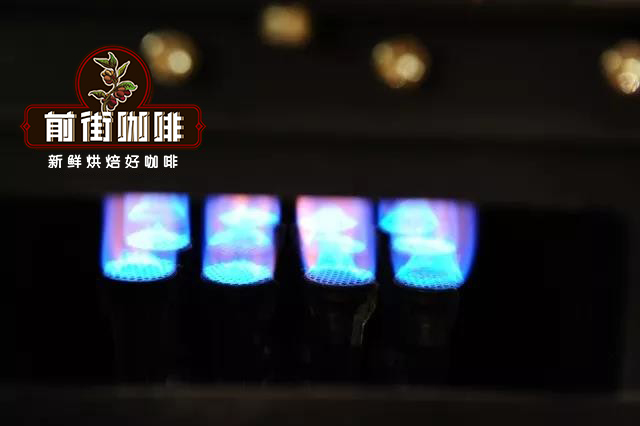
Specific operation of coffee roasting in Qianjie
Put the furnace temperature to 200 degrees Celsius, set the throttle to stew for 1 minute, adjust the firepower to 160C, keep the throttle unchanged, adjust the firepower to 160C, drop to 115C and bake to 5oC, 152C, the bean surface turns yellow (Mena reaction begins), the smell of grass disappears completely, dehydration is completed, and the throttle is adjusted to 4 (at this time, water vapor is produced and the throttle is opened to discharge water vapor)
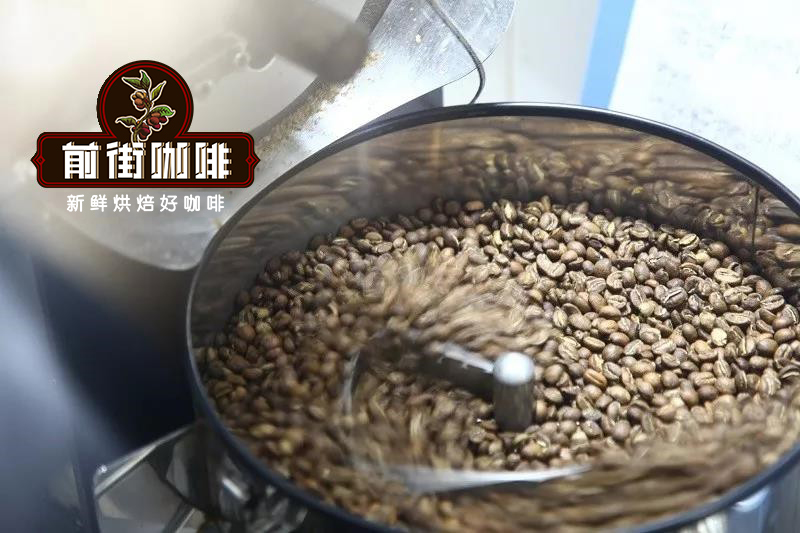
In the 9th minute, ugly Hu wrinkles and black markings appear on the bean surface, and the smell of toast obviously changes to the smell of coffee, which can be defined as a prelude to an explosion. At this time, listen clearly to the sound of an explosion point, and the small firepower remains the same. The throttle is fully open for 5 (when discharged at this time), and the firepower is adjusted to 40 degrees and put into the pot at 191.3 degrees. (belongs to shallow baking)
First explosion stage: open the maximum throttle
The explosion stage is one of the most careful and attentive stages in the coffee roasting process. Previously, because of the constant heating of the coffee beans, the water in the beans changed into a state of steam.
Due to the continued heating in the later stage, the water vapor in the beans and the carbon dioxide produced by the Maillard reaction put a lot of pressure on the cellular structure of the beans. In the end, the pressure was so great that the beans could not bear to break the cellular structure of the coffee beans. Water vapor, carbon dioxide and other substances will gush out from the beans, indicating that an explosion has begun. Therefore, an explosion will produce a lot of smoke, here will open the largest throttle!
How to record the baking curve in the front street

The following is an example of the baking curve of the washed Yeshua fruit Ding Ding:
The front street baking process is as follows:
Baking machine Yangjia 600g semi-straight fire
300g of beans,
Temperature recovery point: 1 min 28, 97.8°C
Yellowing point: 5 minutes, 149.1°C
First explosion: 8 minutes 42, 138.8°C
Out of the oven: 1 minute 48, 193.5.°C
One explosion, dense discharge.
Degree of baking: light baking

Qianjie baking for 12 hours after the cup test flavor: the entrance has citrus, black tea, with the change of temperature, cream, caramel, almond aftertaste obvious and taste clean and sweet.
When is the best time to bake coffee beans?
The best time does not mean that the exact minutes and seconds of your time will prove that your baking degree or quality is uniform, it also involves the characteristics of the coffee beans themselves, the heating rate of the coffee beans throughout the roasting process, and so on.
So with regard to this problem, without considering other factors, you can do this in terms of how to judge the baking factor of steak bean time (this is a simplified version, assuming that you already know the characteristics of raw beans, the temperature recovery point is normal, firepower and other factors are given):
The first step is to make assumptions.
Based on your usual baking experience, make a rough baking prediction. For example, generally speaking, it is about:
When does it go into an explosion?
How long will the explosion last?
How long is it between the first explosion and the second explosion?
Second step sampling
After the start of the first explosion, 30s, 50s, 60s, 25%, 50%, 75%, 25%, 50%, 75%, 75%, 75%, 75%, 75%, 75%, 75%, 75%, 75%, 75%, 75%, 75%, 75%, 75%, 75%, 75%, 75%, 75%, 75%, 75%, 75%, 75%, 75%, 75%, 75%, 75%, 75%, 75%, 75%, 75%, 75%, 75%, 75%, 75%, 75%, 75%, 75%, 75%, 75%, 75%, 75%, 75%, 75%, 75%, 75%, 75%, 75%, 75%, 75%, 75%, 75%, 75%, 75%, 75%, 75%, 75%, 75
The third step is cup test
Cup test sampled samples, to determine which range is most in line with their expectations, and then you can judge it!
But for the same bean, different baking rhythm will greatly affect the taste, taste and flavor of coffee. Generally speaking, the roasting process of coffee will be divided into three stages. The dehydration stage before yellowing, the main chemical reaction (mainly Maillard reaction) after yellowing began to the browning stage before the explosion and the development stage from the explosion to the end of baking.
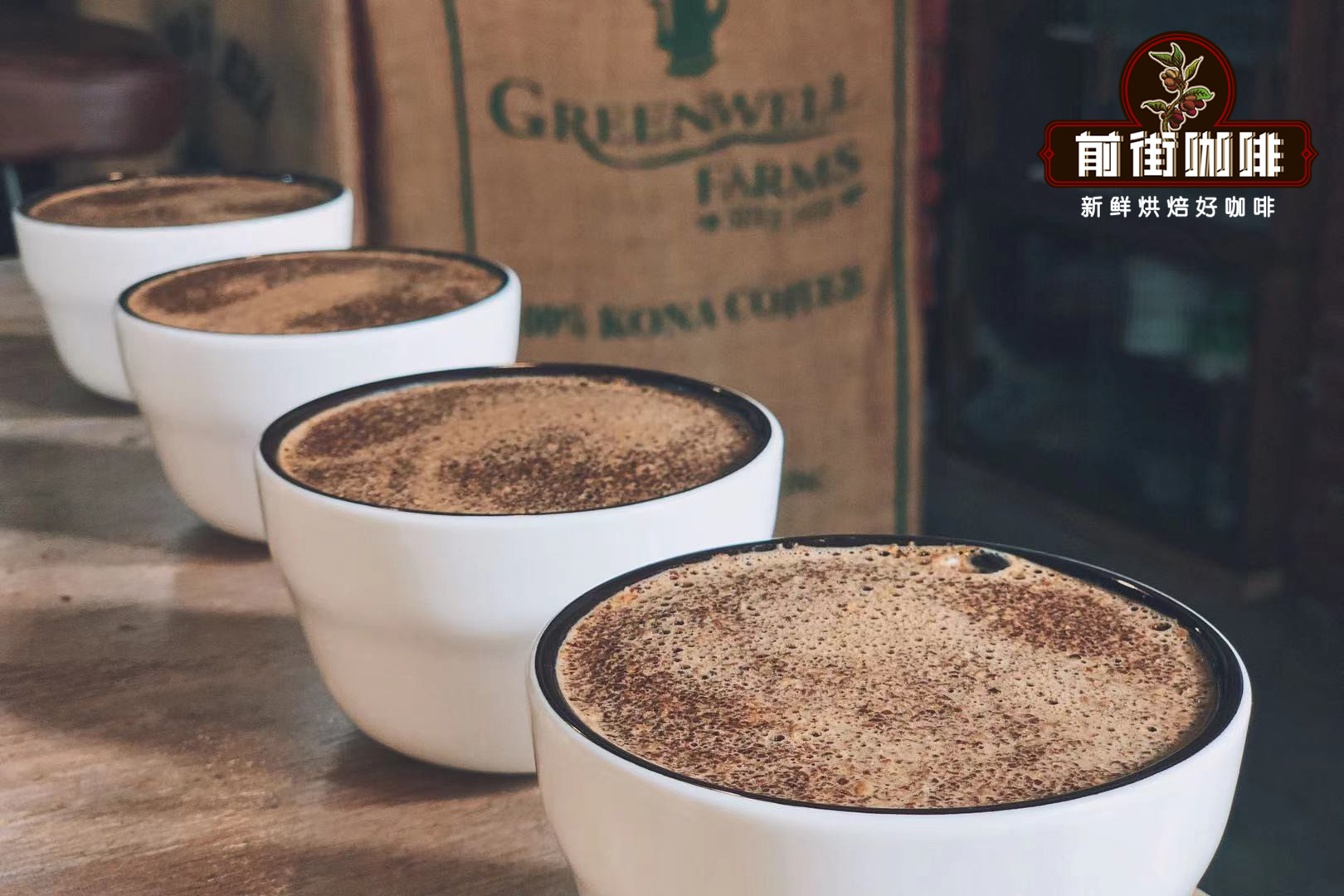
To adjust the rhythm of baking is to adjust the time and temperature rise of these three stages, as well as the temperature of the temperature recovery point.
Generally speaking
Coffee with a faster rhythm and shorter overall roasting time will have a lighter taste, low complexity, bright acidity and lively flavor. However, too fast baking rhythm is easy to give coffee the green taste of plants and underdeveloped flavor.
Coffee with a slower rhythm and longer overall roasting time will have a thicker taste, higher complexity and more caramel chocolate tonality. However, the slow baking pace can lead to dull flavor, dull acidity and low coffee cleanliness.
Coffee roasting is generally divided into three stages, so how will adjusting the time of these three stages affect the taste of coffee?
During the dehydration stage, the fast pace will lead to higher pressure, lower taste and higher cleanliness inside the coffee. A slow pace will lead to less pressure and higher taste in the coffee, which may lead to a rigid flavor, lower cleanliness and higher complexity of the coffee. Because, from slow to fast pace of dehydration will make coffee roasting early, beans accumulated heat impulse and internal pressure from small to large.
This directly affects the rhythm of the next two baking stages. Higher soy core pressure is not conducive to Maillard reaction, resulting in fewer substances that bring Body to coffee and retain more floral aroma instead. The greater the thermal impulse accumulated in the initial stage, the more it will speed up the rhythm of the later process.
After the yellowing stage, Maillard reaction began. Shortening the time of this stage and speeding up the pace will reduce the complexity of the taste of the coffee, improve the cleanliness, and make the taste lighter. On the contrary, if you slow down the pace of this stage, the complexity of the coffee taste will increase and the taste will be thicker, but the cleanliness will be reduced. The longer this stage, the more caramel-like coffee will be. The taste of coffee also tends to be deep and unitary.

Development phase, from the first explosion to the end of baking. At this point, in addition to the Maillard reaction continuing, the caramelization reaction will also begin at the same time. A fast-paced development phase results in coffee with lively, bright acidity, lower complexity, lower bitterness and more varied aromas.
Slowing down the pace of development may make the coffee taste dull, but it will make the acid round and a good complex. Too long may make the round acid turn into a dull acid. Longer development time also produces more chocolate cream flavor.
Finally, Front Street Coffee will share with you "What conditions should a good coffee roaster have?"
1. Coffee green bean recognition ability:
The most basic thing is to distinguish from the appearance and characteristics of raw beans in each major producing area, understand the differences between old and new beans, judge and screen defective beans, and even know how to search the source of raw beans. These are all in order to obtain stable quality when purchasing raw beans.
2, coffee roasting technical ability:
The education and training provided by the machine manufacturer should include the functional operation, troubleshooting and cleaning maintenance of the bean baking machine. And provide practical operation, such as in the same degree of baking, the main production area of raw beans caused by different characteristics of water content, hardness, and the need to pay attention to the baking curve and skills, as well as in the process of different baking degrees, throttle, temperature, fire control. 3. Coffee cup test and bean matching ability: Basic cup test practice allows roasters to judge the quality of coffee and the quality of roasting completion. In terms of the ability to describe coffee flavor, it can also strengthen the explanation of customer sales introduction; In addition, when mixing the comprehensive beans to be used in the store, you can master the characteristics of a single coffee, balance and coordinate various proportions, and show the unique taste of your own roasting cafe.
In short, coffee roasting will face a variety of problems, only familiar with the roasting principle of coffee, continuous accumulation of experience, coupled with improvisation, barista can master exquisite skills.

For more boutique coffee beans, please add private Qianjie coffee on Wechat. WeChat account: kaixinguoguo0925
Important Notice :
前街咖啡 FrontStreet Coffee has moved to new addredd:
FrontStreet Coffee Address: 315,Donghua East Road,GuangZhou
Tel:020 38364473
- Prev
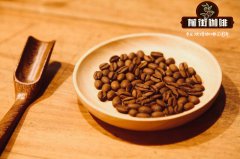
Coffee roasting experience sharing: "Quick" beans how to handle coffee roasting training points
Professional coffee knowledge exchange more coffee bean information please follow the coffee workshop (Wechat official account cafe_style) Coffee roasting skills Collection | the purpose of coffee roasting and the characteristics of coffee beans after roasting coffee last night, I picked out a few beans that were particularly pale in color, on a whim, I took these pale beans to break them apart and smell them to see how they smell.
- Next
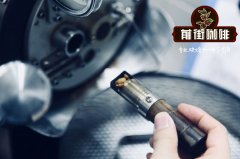
First pressurize and then explode the training of coffee roasters must read "Coffee Professionals' extreme skills Dictionary"
For more information on coffee beans, please follow the coffee workshop (official Wechat account cafe_style) Coffee roasting techniques. There are many steps in the process of coffee roasting. This article will focus on the commercial roaster to observe the roasting stage, and the roasting process produces active chemical reactions within the beans, so
Related
- Beginners will see the "Coffee pull flower" guide!
- What is the difference between ice blog purified milk and ordinary milk coffee?
- Why is the Philippines the largest producer of crops in Liberia?
- For coffee extraction, should the fine powder be retained?
- How does extracted espresso fill pressed powder? How much strength does it take to press the powder?
- How to make jasmine cold extract coffee? Is the jasmine + latte good?
- Will this little toy really make the coffee taste better? How does Lily Drip affect coffee extraction?
- Will the action of slapping the filter cup also affect coffee extraction?
- What's the difference between powder-to-water ratio and powder-to-liquid ratio?
- What is the Ethiopian local species? What does it have to do with Heirloom native species?

